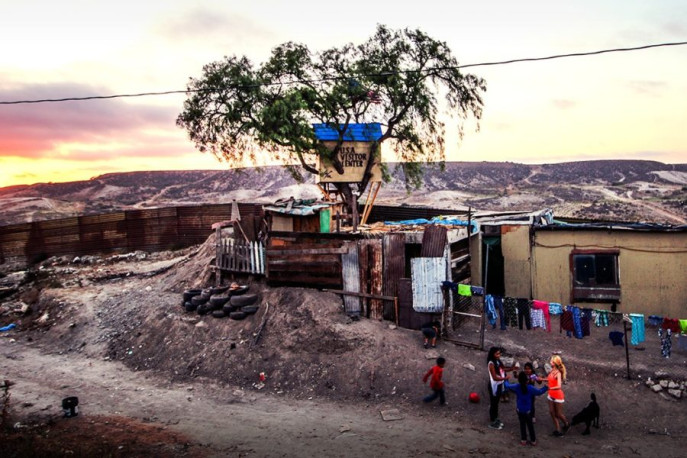
by: Ellen C. Caldwell
for JSTOR Daily
Japanese artist collective Chim↑Pom has stirred up controversy at the US-Mexico Border, building numerous installations near Tijuana’s border. A treehouse in Tijuana, labeled a USA Visitor Center, is decorated with American icons like Huckleberry Finn. Another installation between the new and old fences on the American side of the border called LIBERTAD signifies both the hope a clandestine underground tunnel could represent and the complete opposite—the physical burial of liberty.
In her 2013 article “Presidential Address: The Art of Activism,” Wendy Simonds studies activist artists like Chim↑Pom in the hopes of using social justice art to inform her field of sociology. Simonds writes, “Activist art and activist scholarship have a number of things in common: they emerge out of creative, passionate personal and political impulses; they question authority, domination, and oppression; they seek to disrupt the status quo.”
Connecting the two fields of art and sociology, Simonds points out that “activist artists and scholars seek to call attention to the experiences of those whose are marginalized or whose experiences are not typically valued; they want their work to be emotionally evocative and intellectually provocative.” Simonds’ analysis of two generally incomparable fields is somewhat radical, as is her call to social action…
